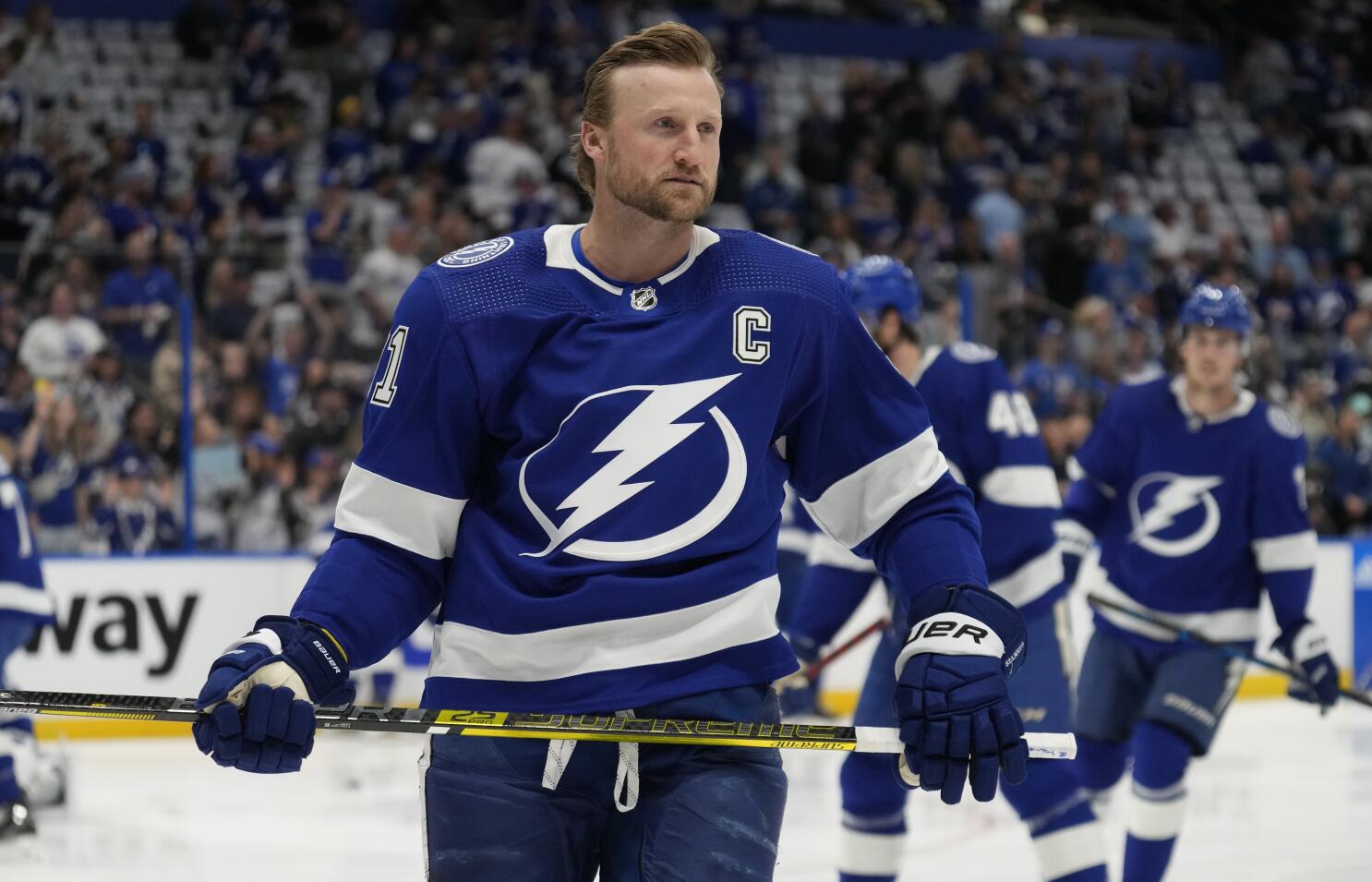No hockey player feels 100% healthy going into the postseason. The grind of the 82–game schedule — all the minutes, all the hits, the blocked shots and the tired legs — adds up.
Players rely on the adrenaline the playoff atmosphere provides, and the realization that it’s tough to even get an opportunity to win a Stanley Cup.
/cloudfront-us-east-1.images.arcpublishing.com/tbt/66UEMGSVYNDANGL6BXVSFPXFRU.jpg)
You don’t want to look back and think you didn’t give it your all. Just ask Lightning center Luke Glendening.
Though this is his first season in a Lightning uniform, Glendening is the oldest player on the team. He turns 35 on Sunday.
As the team’s fourth-line center, Glendening takes punishment every game. He received a hard hit into the boards during the Lightning’s second-to-last regular-season game. He had played in every game until missing the finale against Toronto, and it was uncertain whether he would play in the playoff opener against the Panthers.
But for Glendening, the only question was being certain he could still help his team.
“For five years, I’ve missed the playoffs and the excitement of it, and it’s never given that you’re going to get another chance at it,” Glendening said. “I think for me, the biggest thing is, if you can play in the playoffs, you never know when it’s your last time. There’s a lot of things that go into it, but if I can do my role and help the team, I want to be a part of it.”
“You’re going to get beat up in the series, so everything you can do to help the team, you know you’re going to get some bruises along the way,” added Glendening, who played 9:40 in Game 1 and logged two hits.
Glendening made the playoffs his first three seasons in the NHL playing for the Red Wings, but they didn’t get out of the first round. In 2015, Detroit had a 3-2 series lead on the Lightning, but Tampa Bay won the last two games on its way to the Stanley Cup final.
Glendening then missed the playoffs the next five seasons in Detroit — and in many of those years, bad starts had them out of contention by Thanksgiving. He went to Dallas two seasons ago, making the playoffs both years, including a trip to the Western Conference final last year before the Stars lost to the eventual Cup champion Golden Knights.
“I think you put so much time in, and for me personally, I spent five years in Detroit where we didn’t have a sniff of making the playoffs,” Glendening said. “So it means so much to have an opportunity to play in the playoffs. It’s a culmination of a lot of things, but it’s what you grew up as a kid dreaming about, playing in the NHL playoffs, and so I think that in itself adds to it.”
Glendening is a role player. He’ll be the first to say that he’s not the most skilled or most talented. He’s been able to stick in the NHL because he’s found ways to do things that other players can’t.
“You talk about guys that have an effect on your locker room,” Lightning coach Jon Cooper said. “Luke Glendening has come in here and you’d think he’s played here for 10 years instead of 10 months. ... He’s kind of fought his way in (to the league) and now all of a sudden he’s played 700 games.”
Glendening said after playing against the Lightning for so many years in Detroit, he now sees where that winning mentality comes from being inside the room.
“It’s funny after being on the other side of it, it was always frustrating because I always felt like they think they are going to win and they find a way to,” he said. “Being in here, seeing the leadership, the guys that have been here, their will and resolve to win, the way they go about it, has just been so impressive. ... I think I’m the oldest guy on the team, but it’s still been a great learning experience for me.”
Glendening might not get much recognition, but he’s given the team bottom-six stability as the fourth-line center and an anchor in the faceoff circle from the right side. He consistently has been one of the best faceoff men in the league, and his 56% win percentage in the circle this season tied Steven Stamkos for best on the team.
His ability to win possession in the circle was huge for the Lightning’s penalty-kill unit, particularly in the defensive zone. And Glendening teamed well with Tyler Motte to form a formidable duo that complements fellow penalty-killing forwards Anthony Cirelli and Brandon Hagel.
The Lightning’s penalty kill was one of the biggest pieces of the team’s second-half surge, allowing just four short-handed goals over the final 20 regular-season games, going 56-for-60 (93.3%) over that stretch and becoming a top-five PK unit in the league by season’s end.
Glendening is second on the team among forwards in blocked shots (53), made more impressive by the limited ice time he receives. And while Glendening doesn’t shoot much, he’s found the net, scoring 10 goals on an impressive 17.5 shooting percentage that trails only Brayden Point and Anthony Duclair.
“He has taken a role he’s run with it,” Cooper said. “He knows he’s not a 20-minutes-a-night guy. He actually doesn’t want it. He’s said, ‘It would wear me out.’ But he’s out there the first one jumping over the boards killing penalties in the biggest times of the game. Just what a class act that kid is.”




